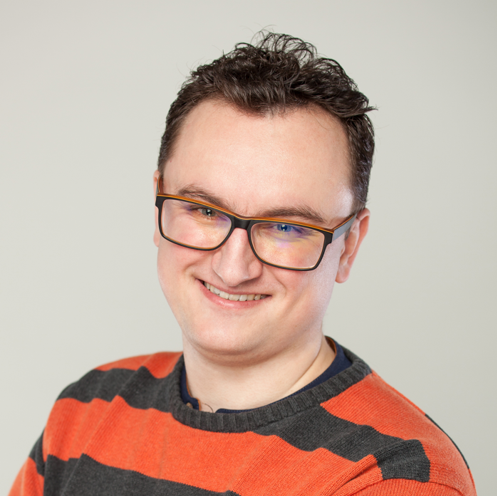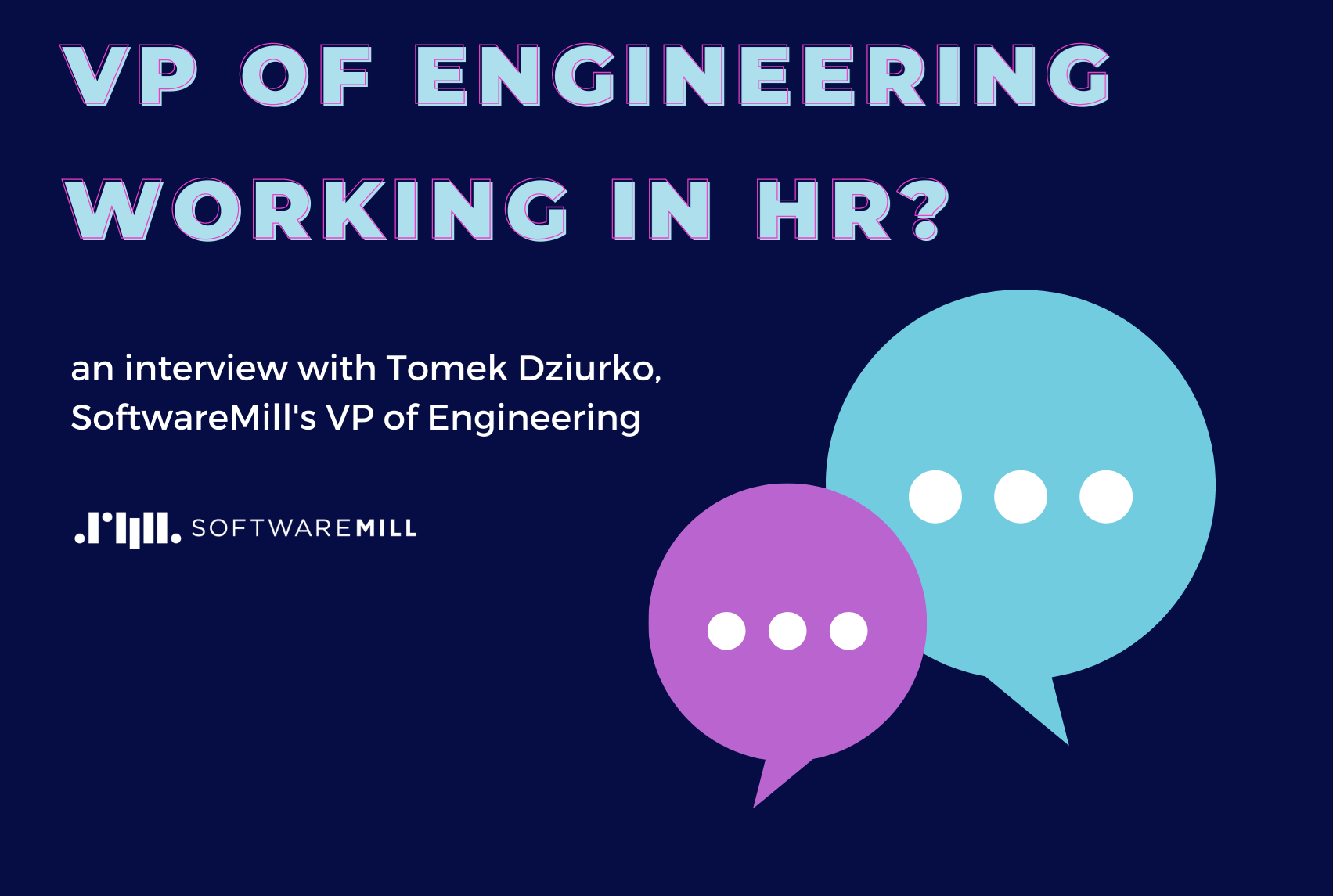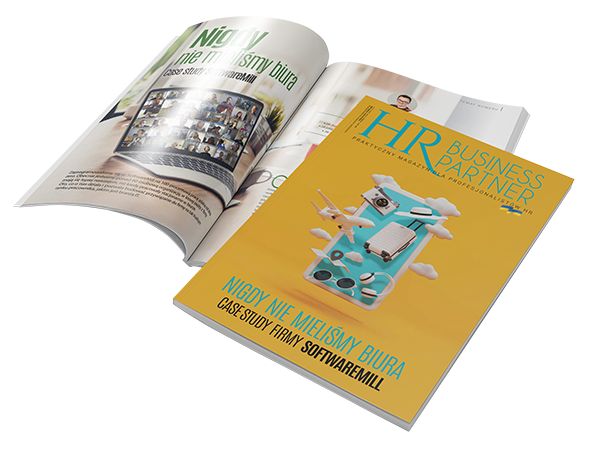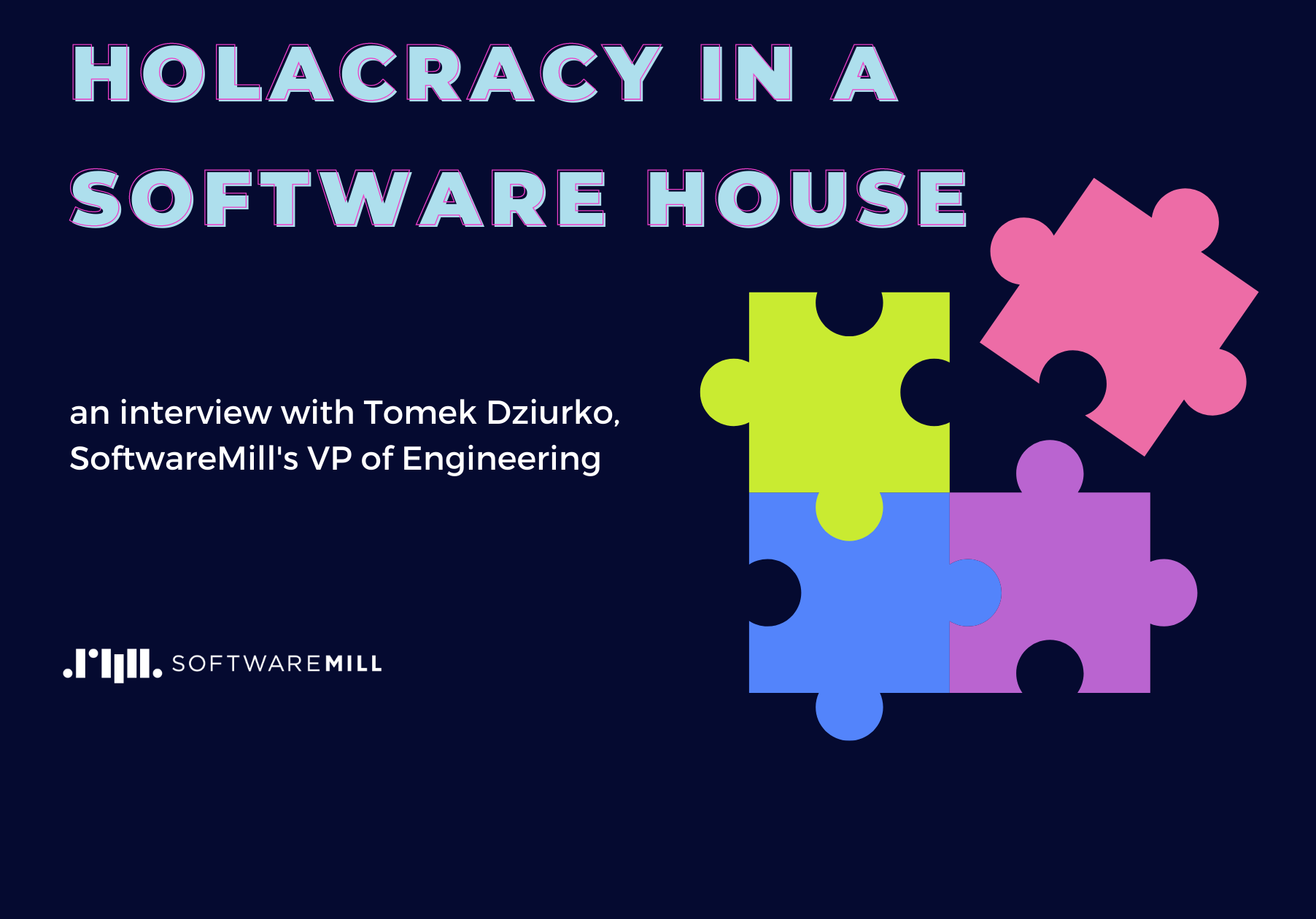Can VP of Engineering handle recruitment processes too?
First part of interview with Tomek Dziurko, SoftwareMill’s VP of Engineering
Part 2 is available here
Kamila Stępniowska (KS): Tomek, your title on your LinkedIn profile is VP of Engineering, but you also scout for new talents and watch over the recruitment process, so what’s going on here? ;)
Tomek Dziurko (TD): Yes, that’s right. Choosing the right people to join SoftwareMill is one of my most important responsibilities. The IT market is very demanding, especially when it comes to experienced specialists, so the help of a programmer with 13 years of experience can only help, both when it comes to finding the right people and to convincing them that SoftwareMill is a good place for them to develop further.
Luckily that’s not the only thing I work on, although I admit that it’s quite important.
KS: What else does your job involve?
TD: In product companies that build an app, the role of the VP of Engineering is much more closely tied to technical aspects. Such a person really supports the technological direction, working together with the CTO on selecting tools, languages, architecture – that is elements with strategic importance for the product’s development, and so for the existence of the whole company. Since most programmers work on developing the same application, the VP of Engineering also focuses on improving communication and collaboration between teams. All this increases the chances of the app’s success and the financial success of the company. After all, at the end of the day, it’s the most mundane mission of each company: to make money that can then be spent on pay rises or a new Ferrari for the CEO. Exactly in that order, of course :)
In the case of a software house, my role is a little different, although of course our CEO probably wouldn’t mind having a Ferrari either :) My main task, other than coordinating the recruitment process for different technical positions, is supporting teams in effective work, by which I mean: supporting the development of technical knowledge, creating paths for development in different technical positions together with senior developers and architects, and taking care of the development of soft skills in the team as well as supporting the exchange of experiences and know-how between teams.
KS: What does that mean in practice? How do you encourage the exchange of knowledge at SoftwareMill?
TD: When it comes to learning, I either organize or help to get different groups of knowledge exchange going within the company. We make sure that people who want to learn or – what’s even more valuable – share their experiences have plenty of opportunities to do so here. We currently have two groups preparing for certifications (AWS and Apache Kafka), a Technical Reading Club (currently discussing “Design It” and previously went over “Designing Data-Intensive Applications” by Martin Kleppmann), and a Soft Skills Reading Club, where we read more about the human aspect of leading teams and companies. We started by going over the classic “Peopleware: Productive Projects and Teams”, and then we read “No Rules Rules: Netflix and the Culture of Reinvention.”
Full article can be read at SoftwareMill’s Blog here.





